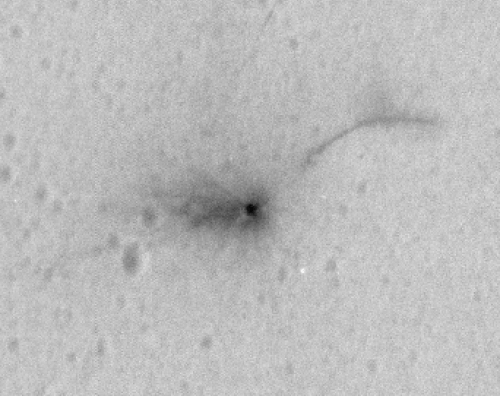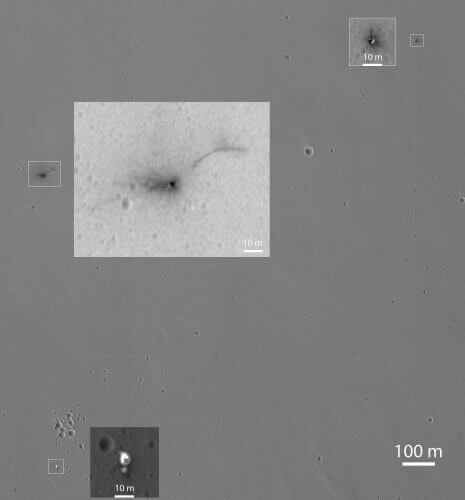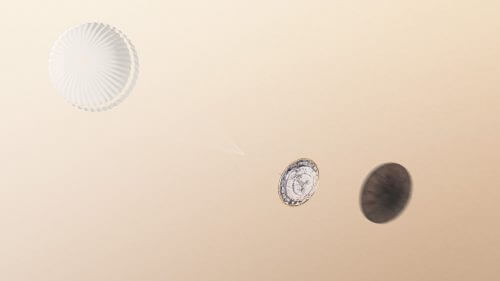NASA's MRO probe photographed the impact site of the European Mars lander Schiaparelli, and found an impact crater with a diameter of 2.4 meters and a depth of 50 centimeters. The European Space Agency continues to investigate the causes of the lander's crash and will publish the results of the test next month.

Continued to the previous photo In low resolution of the impact site, photographed by the American probe MRO, additional images of the site - located in a meridian plane in the equatorial region of Mars - taken with the help of the probe's high resolution camera, HiRISE, are now being published.
In the center of the photo you can see the impact crater where the lander crashed on October 19. The width of the crater is 2.4 meters, a figure that corresponds to the crash of a bone weighing 300 kg at a speed of hundreds of kilometers per hour, according to the European Space Agency. The depth of the crater is 50 centimeters.
Around the impact crater you can see asymmetric lines, the origin of which cannot yet be determined with certainty. It is possible that they were caused by an explosion in a certain direction of the lander's fuel tanks, which were almost full at the time of impact.
To the right and above the impact site you can see another mark in the form of a rainbow, which has not yet been explained, and additional photographs are needed to determine its origin.

At the bottom of the picture you can see the lander's parachute, which is 12 meters long. Adjacent to it is a smaller spot which is the rear heat shield of the lander, which was attached to the parachute and disconnected with it. At the top of the photo you can see the frontal heat shield of the lander, which was barely visible in the previous photo.
As you remember, Schiaparelli made the failed landing on Mars on October 19, after earlier being released from TGO, the mother probe that carried her during the journey to Mars, since they were launched together in March of this year. According to the data sent by the lander during the landing, the initial phase of entering the atmosphere was successfully completed and the parachute also opened as planned. The failure apparently started when the parachute detached earlier than expected. After that, Schiaparelli's engines, which were designed to operate up to a height of only 2 meters above the ground, operated for only a few seconds, and the lander began a free fall that ended with a crash on the ground at a speed of more than 300 km/h.

The medical space agency will use additional photographs such as these and the telemetry sent by the lander during the landing to determine the reasons for the failure that occurred during the landing. Preliminary results of the investigation are expected to be published by the middle of November.
The Schiaparelli lander and the TGO probe are the first part of the Exo Mars program, which is led by the European Space Agency in cooperation with the Russian space agency Roscosmos. The second part of the mission is planned for launch in 2020 and will include a European rover, which will look for signs of past or present life on the planet, and a stationary platform to be developed by Russia. The agency stated that despite the failure of the landing, the main goal of the lander was experimental, and was successfully carried out with the large amount of information it sent and collected during the landing from sensors installed on it. According to the agency, the information will be essential for future landing missions on Mars, including the future Exo Mars mission.

One response
We started destroying other planets..